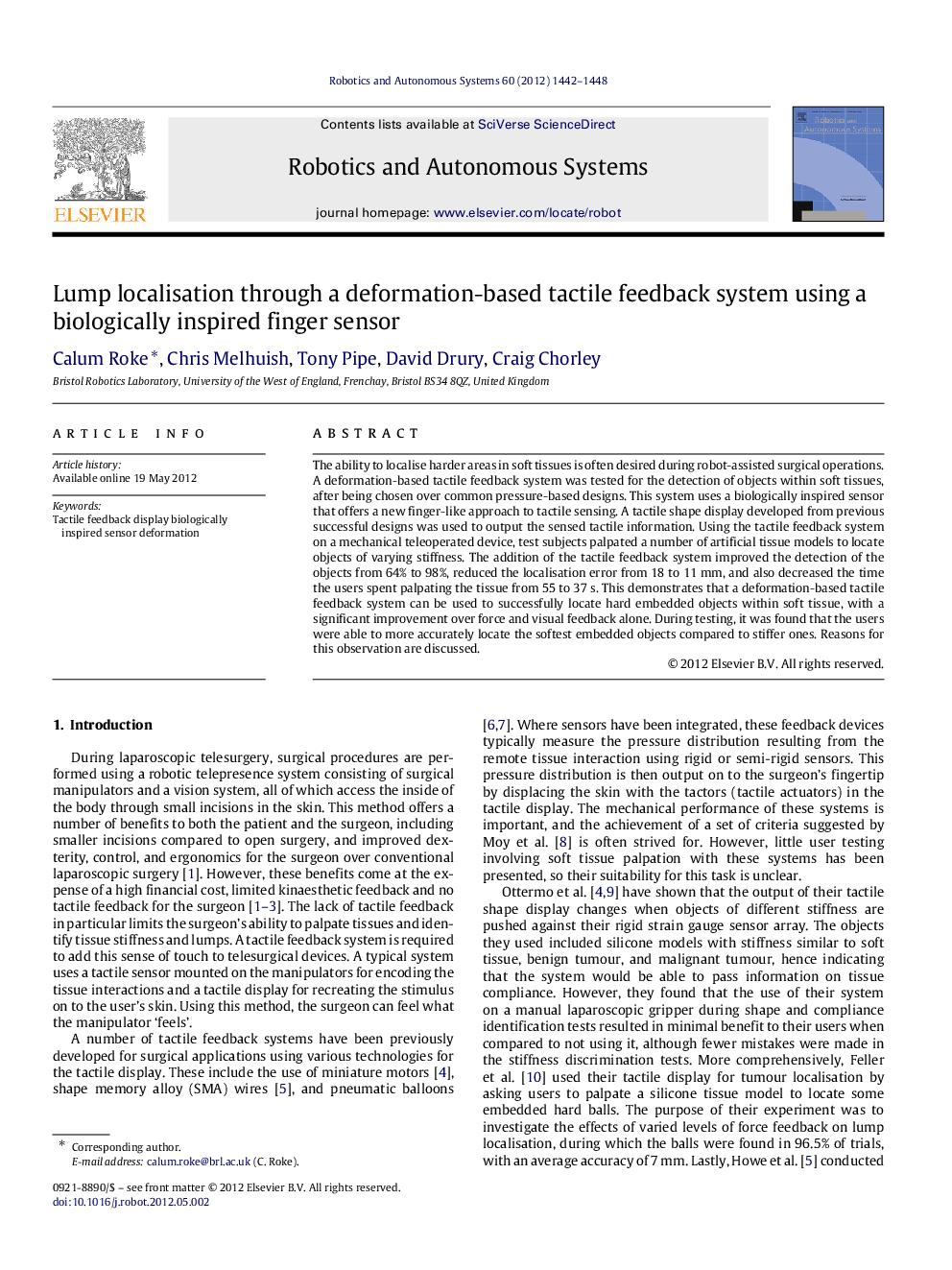| Article ID | Journal | Published Year | Pages | File Type |
|---|---|---|---|---|
| 413135 | Robotics and Autonomous Systems | 2012 | 7 Pages |
The ability to localise harder areas in soft tissues is often desired during robot-assisted surgical operations. A deformation-based tactile feedback system was tested for the detection of objects within soft tissues, after being chosen over common pressure-based designs. This system uses a biologically inspired sensor that offers a new finger-like approach to tactile sensing. A tactile shape display developed from previous successful designs was used to output the sensed tactile information. Using the tactile feedback system on a mechanical teleoperated device, test subjects palpated a number of artificial tissue models to locate objects of varying stiffness. The addition of the tactile feedback system improved the detection of the objects from 64% to 98%, reduced the localisation error from 18 to 11 mm, and also decreased the time the users spent palpating the tissue from 55 to 37 s. This demonstrates that a deformation-based tactile feedback system can be used to successfully locate hard embedded objects within soft tissue, with a significant improvement over force and visual feedback alone. During testing, it was found that the users were able to more accurately locate the softest embedded objects compared to stiffer ones. Reasons for this observation are discussed.
► A deformation-based tactile feedback system is justified for surgical applications. ► The temporal characteristics of the system are tested and discussed. ► User testing of the system demonstrates its effectiveness for lump localisation. ► Lump detection is improved from 64% to 98% and the accuracy from 18 mm to 11 mm. ► Softer lumps are localised more accurately; this is discussed.
